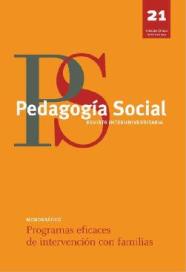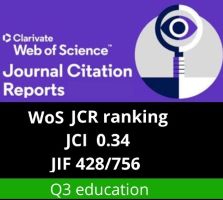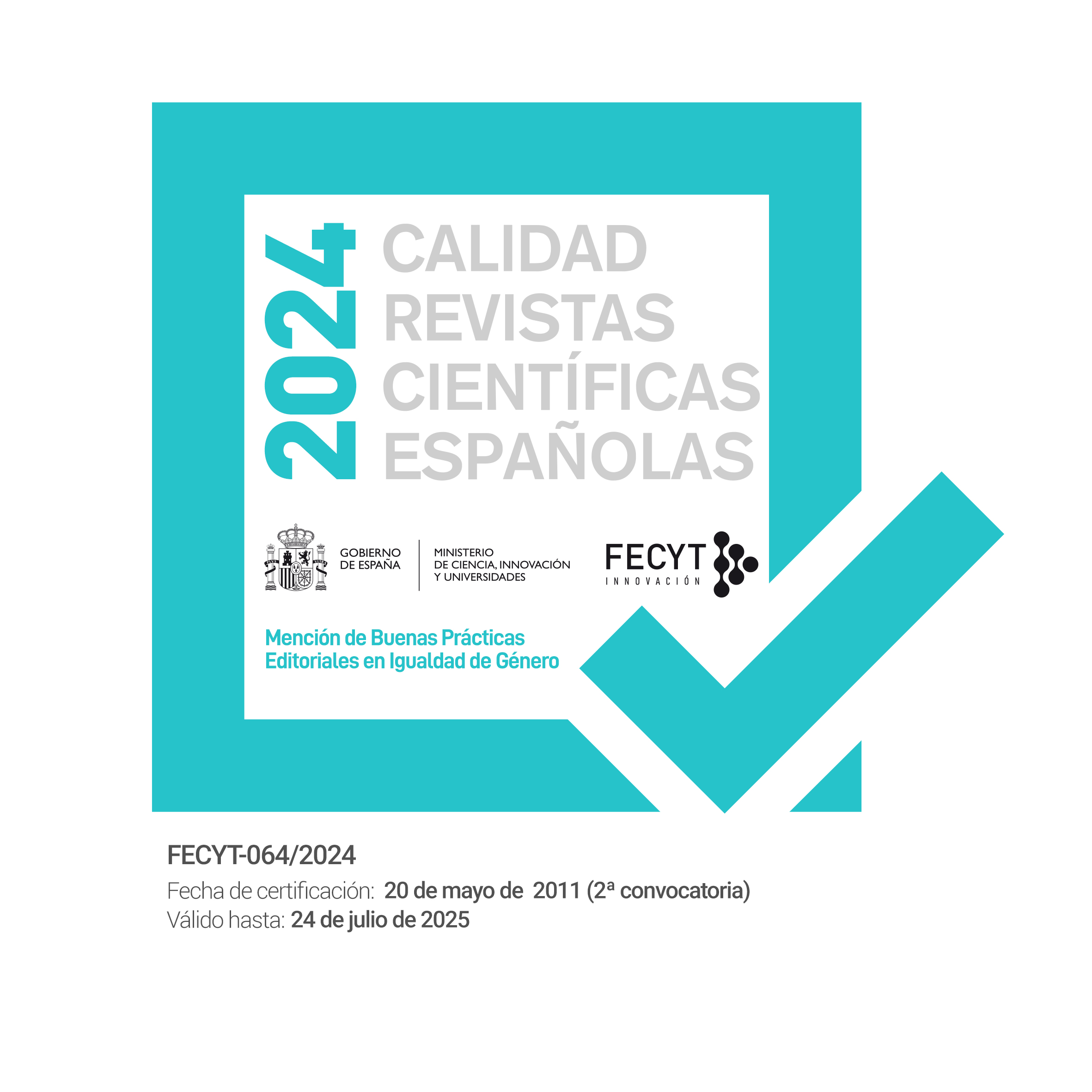Los beneficios de los programas intergeneracionales desde la perspectiva de los profesionales
DOI:
https://doi.org/10.7179/PSRI_2013.21.10Palabras clave:
Programas intergeneracionales, beneficios del contacto intergeneracional, relaciones intergeneracionalesResumen
La investigación en el campo de los programas intergeneracionales ha demostrado que la relación entre individuos de diferente generación tiene un impacto muy positivo para todos los implicados en la misma. El aumento del bienestar psicológico, físico y social de las personas mayores, y el cambio de percepciones de los jóvenes sobre las personas mayores son algunos de los resultados que suelen conseguirse con este tipo de programas. Este trabajo examina el impacto que tienen los programas generacionales sobre los que participan directamente en ellos (niños, jóvenes y adolescentes) así como sobre otros agentes implicados indirectamente en la relación intergeneracional (familiares, profesionales y sociedad) desde la perspectiva de los profesionales que trabajan en los programas. Se parte de un diseño cualitativo basado en la recogida de datos mediante entrevistas semiestructuradas a 25 profesionales que coordinan programas intergeneracionales en España. El análisis de contenido de la información proporcionada por los profesionales ha permitido evidenciar cuatro dimensiones dialécticas en este estudio: impacto en participantes, familias, profesionales y conexión intergeneracional. Finalmente, se aportan algunas conclusiones sobre la importancia de indagar sobre el impacto que tienen estos programas en todos los agentes implicados en la relación intergeneracional.Descargas
Citas
Abrams, D.; Eller, A. y Bryant, J. (2006): An age apart: The effects of intergenerational contact and stereotype threat on performance and intergroup bias. Psychology and Aging, 21(4), 691-702.
http://dx.doi.org/10.1037/0882-7974.21.4.691
PMid:17201490
Allred, G.B. y Dobson, J.E. (1987): Remotivation Group Interaction: increasing children´s contact with elderly. Elementary school Guidance and Counselling, 21(3), 216-220.
Almeida, T., Hatton-Yeo, A. y Marreel, I. (2009): Guide of Ideas for Planning and Implementing Intergenerational Projects. Together: yesterday, today and tomorrow. Portugal: Intergenerational Valorisation and Active Development Association.
Bostrum, A.K., Hatton-Yeo, A., Ohsako, T. y Sawano, Y. (2001): Una valoración general de iniciativas de programas intergeneracionales en los países involucrados. En Hatton-Yeo, A. y Ohsako, T. (ed.), Programas Intergeneracionales: política pública e implicaciones de la investigación. (pp. 3-7).Hamburgo: Instituto de la UNESCO para la Educación.
Brabazon, K. (1999): Student improvement in the intergenerational work/study program". En Kuehne, V. (coord.), Understanding what we have created. (pp. 51-64). Binghamton: The Haworth Press,
Bressler, J. (2001): "The impact of Intergenerational Programs on Long-Term Care Residents". 54th Annual Scientific Meeting of the Gerontological Society of America, Chicago, IL, noviembre de 2001.
Carstensen, L., Mason, S. y Caldwell, E. (1982): Children's attitudes toward the elderly: An intergenerational technique for change. Educational Gerontology, 8, 291-301.
http://dx.doi.org/10.1080/0360127820080308
Caspi, A. (1984): Contact hypothesis and inter-age attitudes: A field study of cross-age contact. Social Psychology Quarterly, 47, 74-80.
http://dx.doi.org/10.2307/3033890
COM: Comisión Europea (1999): Hacia una Europa para todas las edades. Fomentar la prosperidad y la solidaridad entre generaciones, 221 final. Bruselas, 21 de mayo.
Duggar, M. (1993): Intergenerational programs: Weaving hearts and minds. Tallahassee, FL: Florida Council on Aging, Florida State Department of Education.
Dupont, C. y Letesson, M. (2010): Comment developer une action nintergénérationnelle? Bruselas: De Boeck.
Foster, K. (1997): Creating a child care center in a nursing home and implementing an intergenerational program. ERIC Document Reproduction Service: ED 411053.
Fried, L., Carlson, M.C., Freedman, M., Frick, K.D., Glass, T.A., Hill, J., McGill, S., Rebok, G. W., Seeman, T., Tielsch, J., Wasik, B.A. y Zeger, S. (2004): A Social Model for Health Promotion for an Aging Population. Initial Evidence on the Experience Corps Model. Journal of Urban Health, 81(1), 64-78.
http://dx.doi.org/10.1093/jurban/jth094
PMid:15047786 PMCid:PMC3456134
Gutiérrez, M. (2011): Programas intergeneracionales. Teoría, política y práctica. Saarbrücken: Editorial Académica Espa-ola.
Hamilton, G., Brown, S., Alonzo, T., Glover, M., Mersereau, Y. y Wilson, P. (1999): Building community for the long term: An intergenerational commitment. Gerontologist, 39, 235-238.
http://dx.doi.org/10.1093/geront/39.2.235
PMid:10224720
Hatton-Yeo, A. Klerq, J. Ohsako, T. y Newman, S. (2001): Política pública y recomendaciones para la investigación: una perspectiva internacional. En Hatton- Yeo, A. y Ohsako, T. (ed.), Programas Intergeneracionales: política pública e implicaciones de la investigación. Una perspectiva internacional pp. 9-17).Hamburgo: Instituto de la UNESCO para la Educación.
Hickey, T. y R.A. Kalish (1968): Young people's perceptions of adults. Journal of Gerontology, 23(2), 215-229.
http://dx.doi.org/10.1093/geronj/23.2.215
PMid:5643888
IMSERSO (2003): Plan de Acción para las Personas Mayores 2003-2007. Madrid: Ministerio de Trabajo y Asuntos Sociales.
Jonhson, B. y Christensen, L. (2000): Educational Research. Quantitative and Cualitative Approaches. MA: Allyn & Bacon.
Knapp, J.L. y Stubblefield, P. (2000): Changing students' perceptions of aging: The impact of an intergenerational service learning course. Educational Gerontology, 26, 611-621.
http://dx.doi.org/10.1080/03601270050200617
Kocarnik, R. A. y Ponzett, J.J. (1986): The influence of Intergenerational contact on child care participants' attitudes toward the elderly. Child and youth Care forum. Journal of Research and Practice in Children`s Services, 15(4), 244-250.
Kuehne, V. (2005): Intergenerational strategies series. Making What Difference? How Intergenerational Programs help children and families. Elders as resources. Intergenerational Strategies Series. Baltimore: The Annie E. Casey Foundation.
Lambert, D., Dellmann-Jenkins, M. y Fruit, D. (1990): Planning for contact between the generations: An effective approach. The Gerontologist, 30, 553-556.
http://dx.doi.org/10.1093/geront/30.4.553
PMid:2394391
MacCallum, J., Palmer, D., Wright, P., Cumming-Potvin, W., Northcote, J., Booker, M. y Tero, C. (2006): Community building through intergenerational exchange programs. Australia: National Youth affairs Research Scheme.
Murphy-Russell, S., Die, A.H. y Walker, J.L (1986): Changing attitudes toward the elderly: The impact of three methods of attitude change. Educational Gerontology, 12, 241-251.
http://dx.doi.org/10.1080/0380127860120304
Naciones Unidas (2002): Informe de la Segunda Asamblea Mundial sobre el Envejecimiento. Nueva York: Naciones Unidas.
Newman, S. (1997): History and Evolution of Intergenerational Programs. En Newman, S.; Ward, C.; Smith, T.; Wilson, J. y McCrea, J.M. (ed.), Intergenerational Programs: past, present and future. (pp. 55-79). Washington, DC: Taylor and Francis,
Newman, S. y Larimer, B. (1995): Senior Citizen School Volunteer Program: report on cumulative data: 1988-1995. Pittsburgh, PA: Generations Together.
Newman, S. y Sánchez S. (2007): Los Programas Intergeneracionales: Concepto, historia y modelos. En Sánchez, M. (dir.), Programas Intergeneracionales. Hacia una sociedad para todas las edades (pp. 37-69). Barcelona: Fundación "La Caixa".
Osborne, S.S. y Bullock, J. R. (2000): Intergenerational programming in action: Befrienders. Educational Gerontology, 26(2), 169-182.
http://dx.doi.org/10.1080/036012700267321
Ostir, G.V., Ottenbacher, K.J. y Maarkides, K.S. (2004). Onset of frailty in older adults and the protective role of positive affect. Journal of Psychology and Aging, 19(3), 402-404.
http://dx.doi.org/10.1037/0882-7974.19.3.402
PMid:15382991
Parnell, K. (1980): Young and old together: A literature review. Childhood Education, 56, 184-188.
Patton, M. Q. (2002): Qualitative Research and Evaluation Methods. Thousand Oaks, CA: Sage.
Peacock, E.W. y Talley, W. M.(1984): Intergenerational contact: a way to counter ageism. Educational Gerontology, 10(1), 13-24.
http://dx.doi.org/10.1080/0380127840100102
Quecedo, R. y Casta-o, C. (2002): Introducción a la metodología de investigación cualitativa. Revista de Psicodidáctica, 14,5-40.
Rebok, G. W.; Carlson, M. C.; Glass, A.; McGill, S.; Hill, J.; Wasik, B.; Ialongo, N.; Frick, K. D.; Fried, L.P. y Rasmussen, M.D. (2004): Short-Term Impact of Experience Corps Participation on Children and Schools: Results a Pilot Randomized Trial. Journal of Urban Health, 81(1), 79-93.
http://dx.doi.org/10.1093/jurban/jth095
PMid:15047787 PMCid:PMC3456143
Rosebrook, V. (2006): Research indicates: Intergenerational interactions Enhance Young Children's Personal/Social Skills. The Generations United Magazine, 11(2), 5.
Salamanca, A.B. y Martín-Crespo, M. C (2007): El muestreo en la investigación cualitativa. Nure Investigación, 27, 1-4.
Sánchez, M., Díaz, P., López, J., Pinazo, S. y Sáez, J. (2008): INTERGEN. Descripción, análisis y evaluación de los programas intergeneracionales en Espa-a. Modelos y buenas prácticas. Resumen ejecutivo. Recuperado de: http://www.redintergeneracional.es/documentos.php>
Whitley, E., Duncan, R., McKenzie, P. y Sledjecki, S. (1976): From time to time: A record of young children's relationships with the aged. Gainesville, FL: University of Florida, College of Education, P.K. Yonge Laboratory School.
Descargas
Publicado
Cómo citar
Número
Sección
Licencia
Derechos de autor 2014 Pedagogía social. Revista interuniversitaria

Esta obra está bajo una licencia Creative Commons Reconocimiento-NoComercial 3.0 Unported.
Derechos de reproducción y archivo
La versión publicada de los artículos podrá ser autoarchivada por sus autores en repositorios institucionales y temáticos de acceso abierto. No obstante la reutilización total o parcial de los mismos en nuevos trabajos o publicaciones deberá ser autorizada por Pedagogía Social. Revista Interuniversitaria.
Los trabajos publicados deberán ser citados incluyendo el título de la Revista, Pedagogía Social. Revista Interuniversitaria, nº, páginas y año de publicación.
Responsabilidades éticas
Pedagogía Social. Revista Interuniversitaria no acepta material publicado anteriormente en otros documentos. Los/as autores/as son responsables de obtener los permisos oportunos para reproducir parcialmente material de otras publicaciones y citar correctamente su procedencia. Estos permisos deben solicitarse tanto al autor/a como a la editorial que ha publicado dicho material.
Es obligación de Pedagogía Social. Revista Interuniversitaria detectar y denunciar prácticas fraudulentas.
En la lista de autores/as firmantes deben figurar únicamente aquellas personas que han contribuido intelectualmente al desarrollo del trabajo.
La revista espera que los/as autores/as declaren cualquier asociación comercial que pueda suponer un conflicto de intereses en conexión con el artículo remitido.
Los autores deben mencionar en el manuscrito, preferentemente en el apartado del método, que los procedimientos utilizados en los muestreos y controles han sido realizados tras la obtención de consentimiento informado.
La revista no utilizará ninguno de los trabajos recibidos con otro fin que no sea el de los objetivos descritos en estas normas.
Aviso de derechos de autor/a
© Pedagogía Social. Revista Interuniversitaria. Los originales publicados en las ediciones impresa y electrónica de esta Revista son propiedad del Pedagogía Social. Revista Interuniversitaria, siendo necesario citar la procedencia en cualquier reproducción parcial o total.
Salvo indicación contraria, todos los contenidos de la edición electrónica se distribuyen bajo una licencia de uso y distribución “Creative Commons Reconocimiento-No Comercial 3.0 España” (CC-by-nc). Puede consultar desde aquí la versión informativa y el texto legal de la licencia. Esta circunstancia ha de hacerse constar expresamente de esta forma cuando sea necesario.






